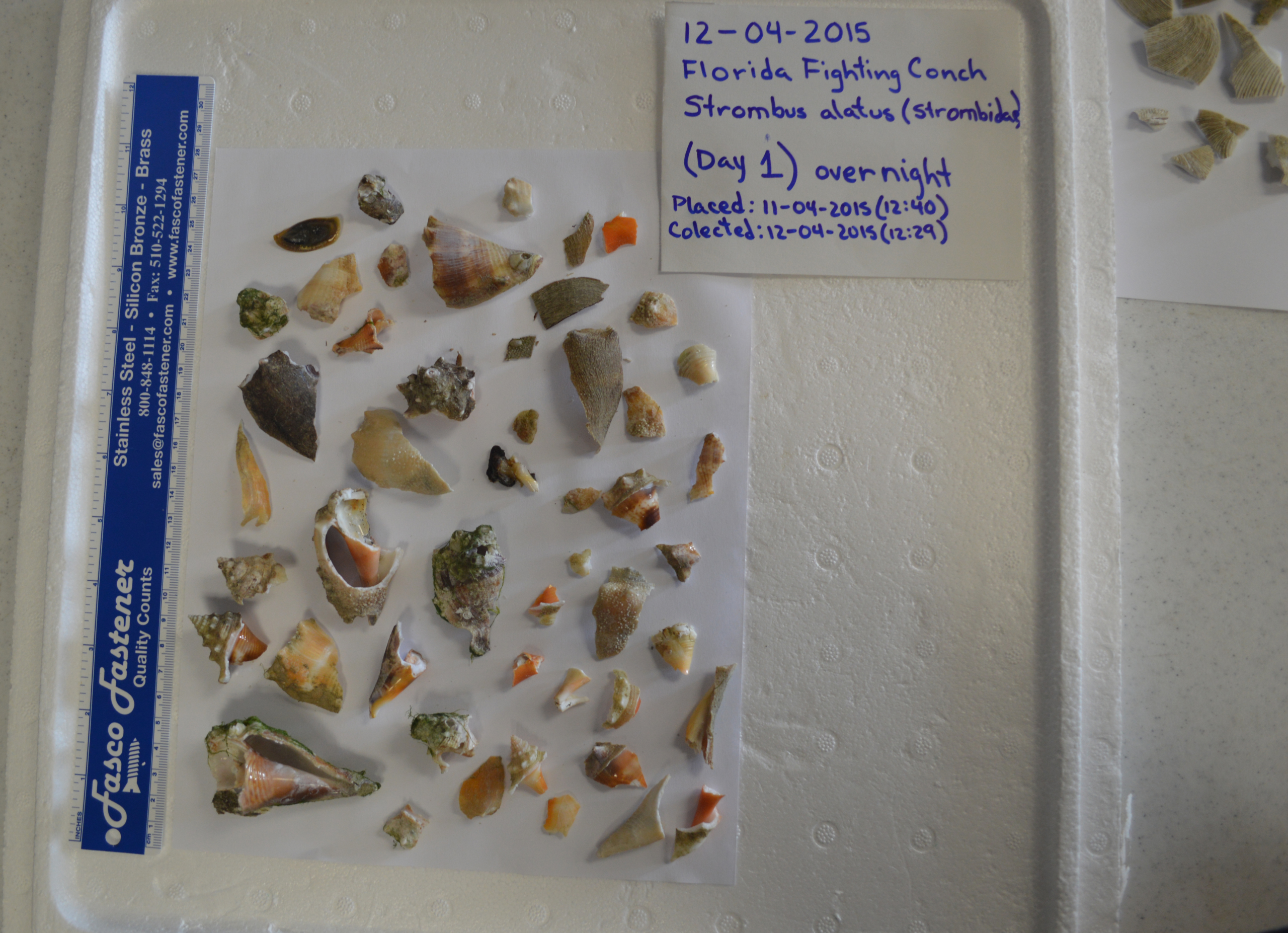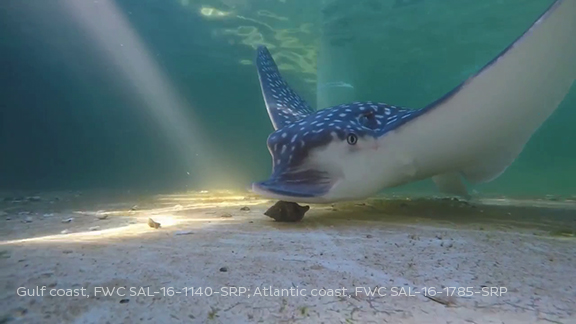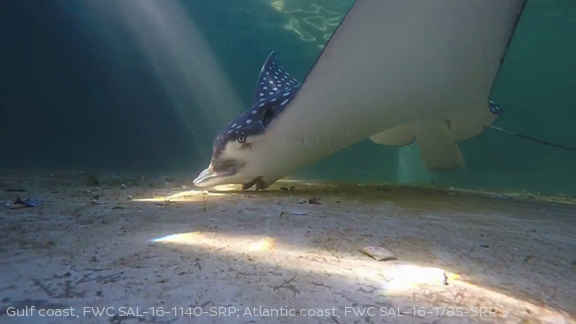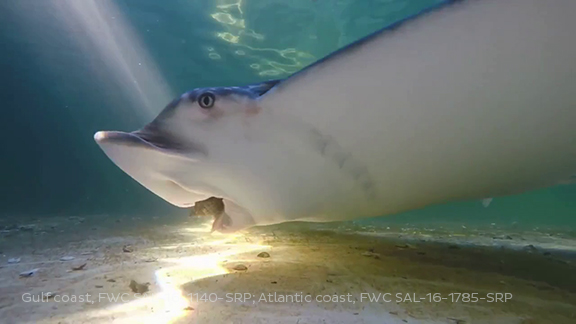Crunch! Understanding Eagle Ray Diets
For the first time, a team of researchers has demonstrated that passive acoustic recorders can be used to help identify the prey that whitespotted eagle rays (Aetobatus narinari) eat, based merely on the crunching sounds the rays make when they crush a mollusk shell.
From crabs to fish, many marine animals use durophagy — shell crushing — to consume prey. But it’s often difficult or impossible to know the types of mollusks these animals are consuming because the crushing force leaves little trace evidence behind and many of the animals that use durophagy are highly mobile, often eating on the run and making it hard to quantify their impact on benthic, or bottom-dwelling, animal communities.
Understanding how animals like whitespotted eagle rays impact shellfish communities is important because shellfish play an important ecological role, including filtering seawater. They’re also farmed for human consumption, and rays may adversely impact these estuarine farms.
To conduct the study, the researchers put rays in a research pool and used underwater cameras to film them eating while recording the sounds they made. The team — led by Florida Atlantic University’s Harbor Branch Oceanographic Institute in collaboration with FAU’s College of Engineering and Computer Science; the Chicago Zoological Society’s Sarasota Dolphin Research Program, Mote Marine Laboratory & Aquarium; and the Florida Institute of Technology — also tested the technique in the natural environment, demonstrating that the shell-crushing sounds can be heard up to 100 meters away.
The paper, “Capturing shell-crushing by large mobile predators using passive acoustics technology,” was published in the Journal of Experimental Marine Biology and Ecology and concludes that underwater acoustic recordings can address the need to monitor predator-induced losses to valuable shellfish communities even in environments where visibility is limited, but that more work is needed to build a larger library of sounds associated with crushing of a greater variety of mollusks.




The lead author is Matt Ajemian, of Florida Atlantic University’s Harbor Branch Oceanographic Institute (FAU-HBOI). . Co-authors included Catherine Lamboy, Florida Institute of Technology; Ali Ibrahim, , FAU’s College of Engineering and Computer Science; Breanna DeGroot, FAU-HBOI ; Kim Bassos-Hull, Sarasota Dolphin Research Program and Mote Marine Laboratory; David Mann, Loggerhead Instruments, Inc.; and Laurent Chérubin, FAU-HBOI.
- Read the full study: https://doi.org/10.1016/j.jembe.2020.151497
- Citation: Ajemian, M., C. Lamboy, A. Ibrahim, B. DeGroot, K. Bassos-Hull, D. Mann, L. Cherubin. 2021. Capturing shell-crushing by large mobile predators using passive acoustics technology. Journal of Experimental Marine Biology and Ecology. Volume 535, February 2021, 151497.
The study was funded by a grant from the Save Our Seas Specialty License Plate program administered by the Harbor Branch Oceanographic Institute Foundation.




